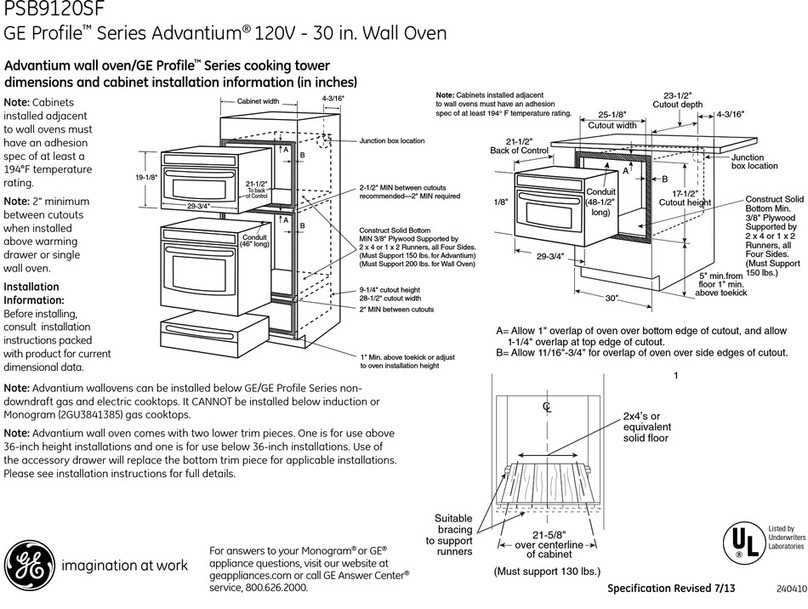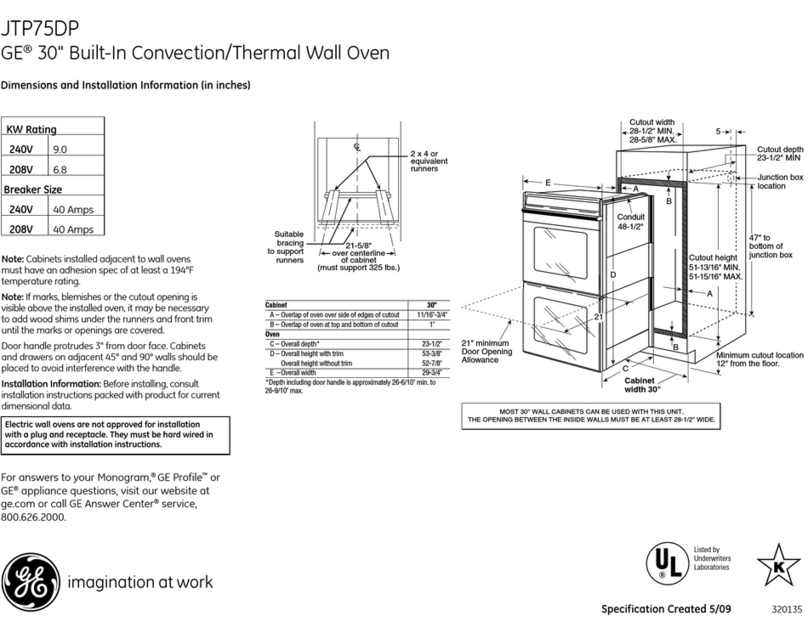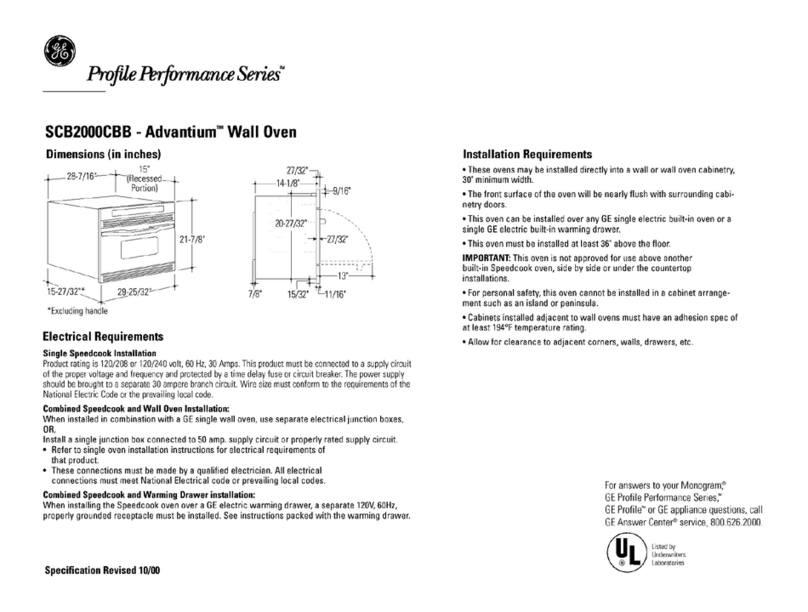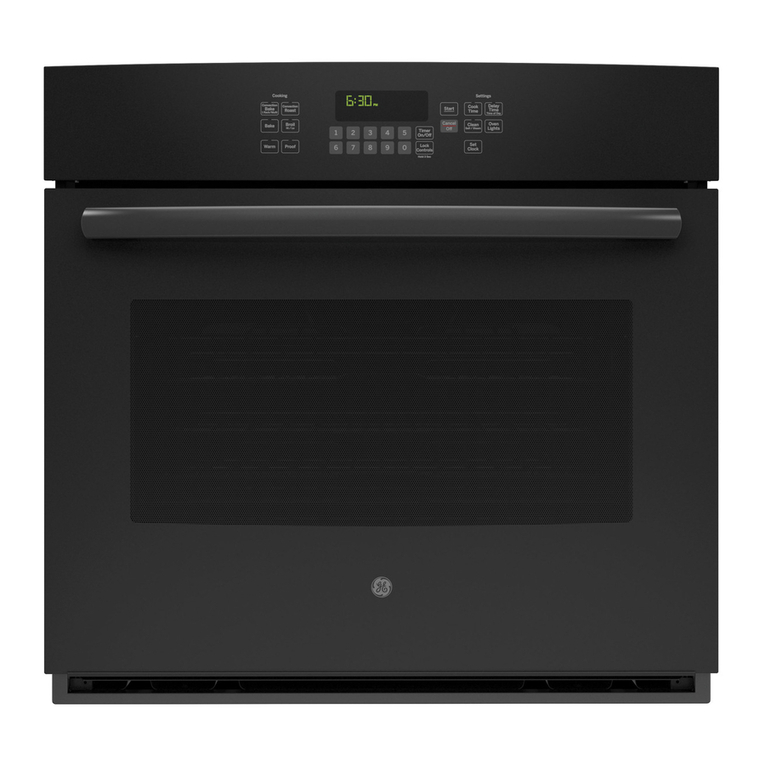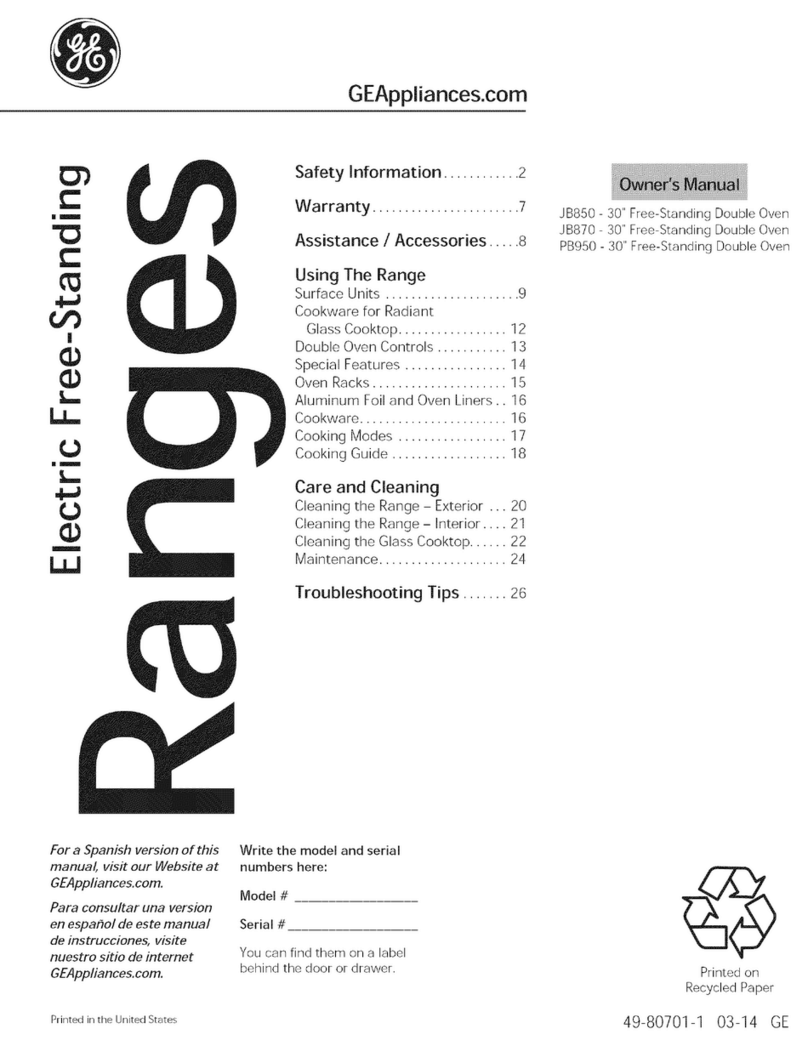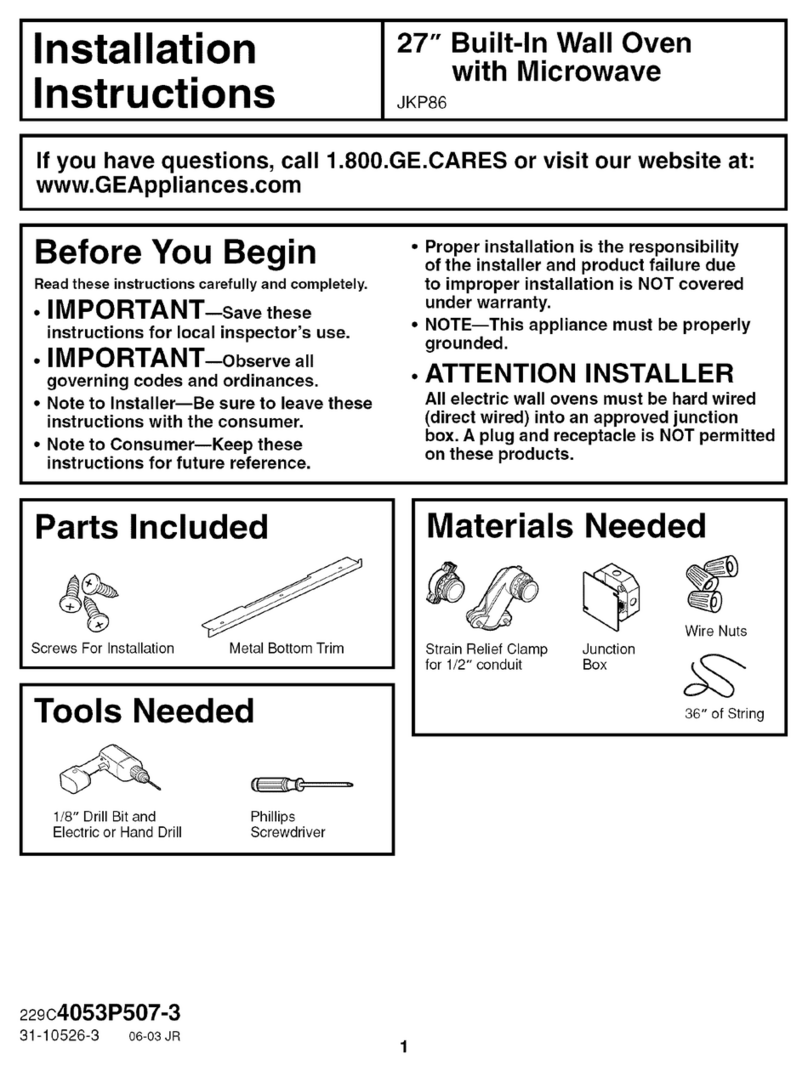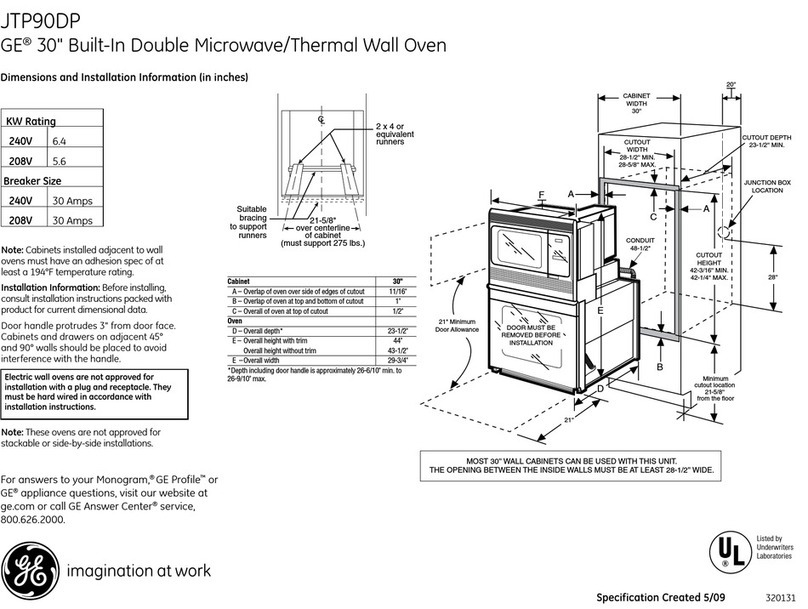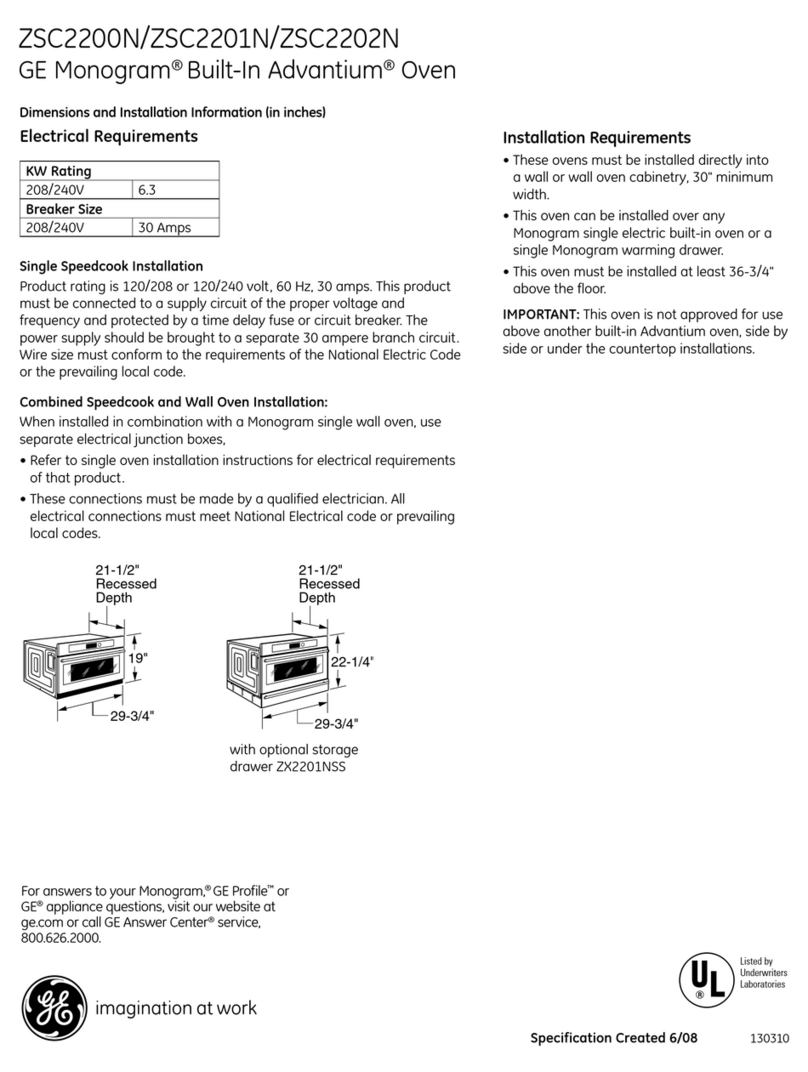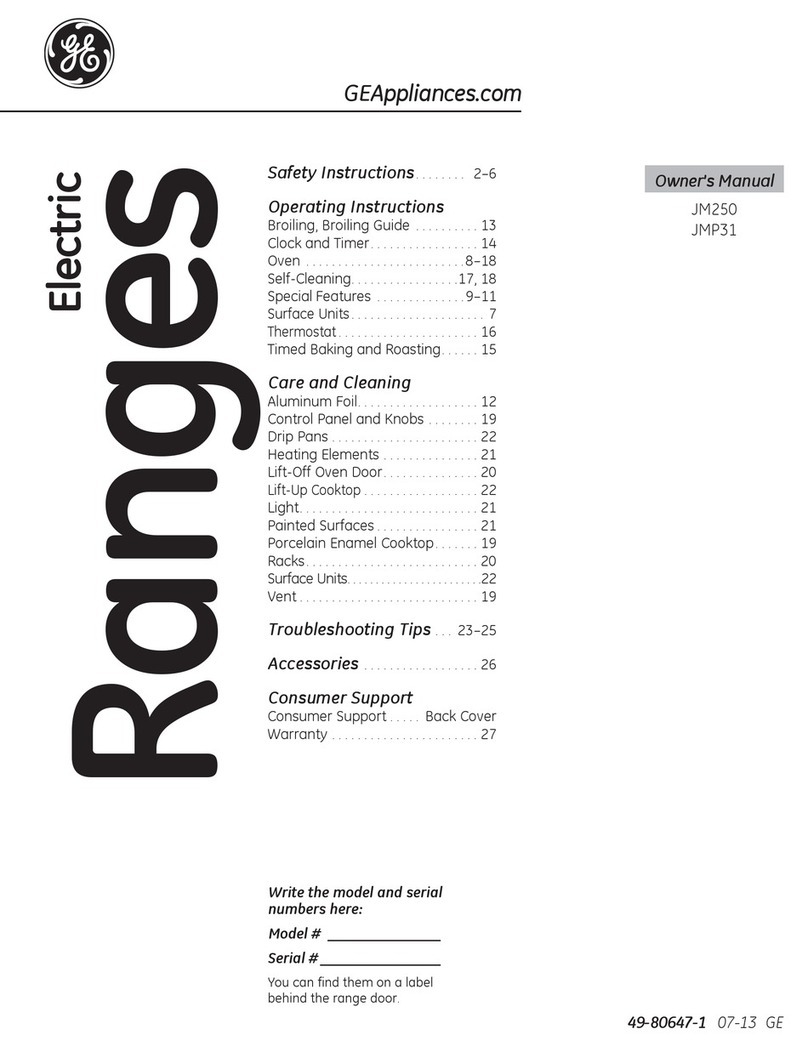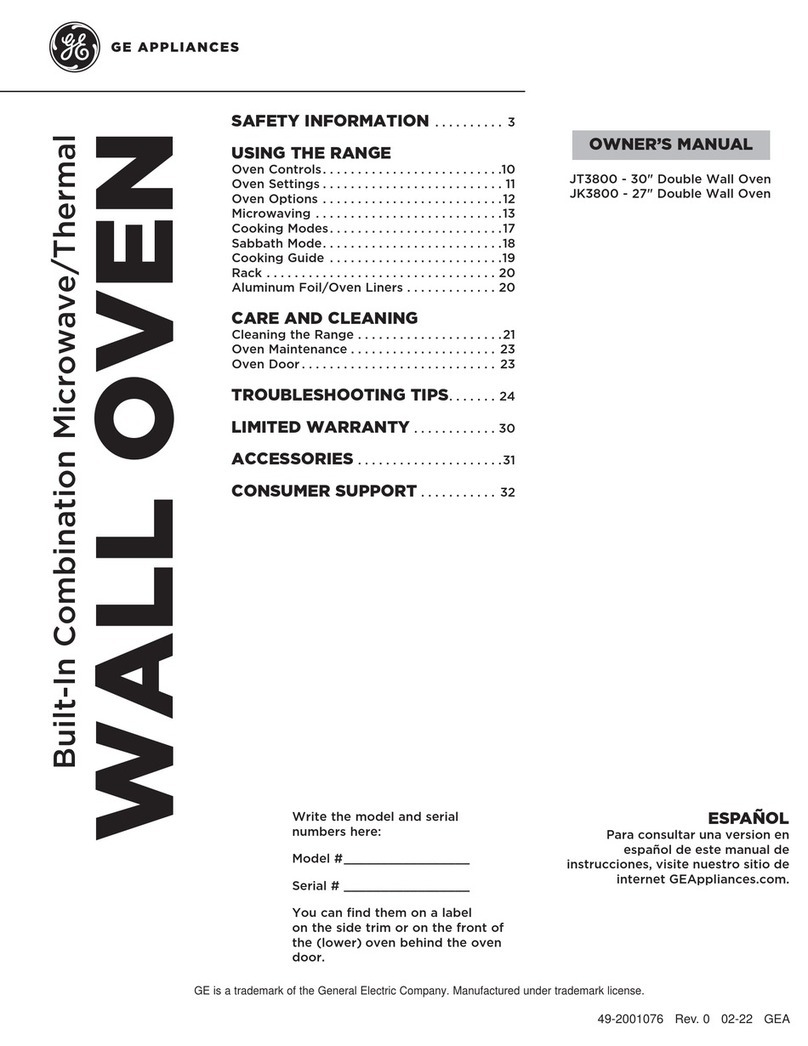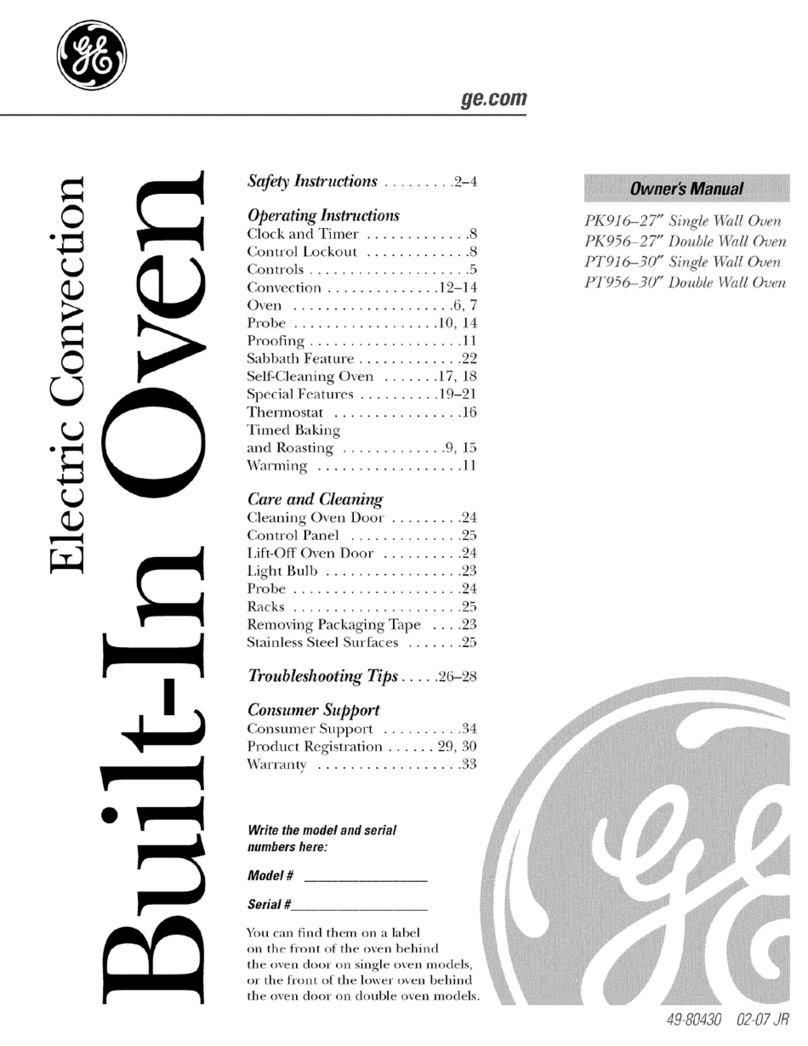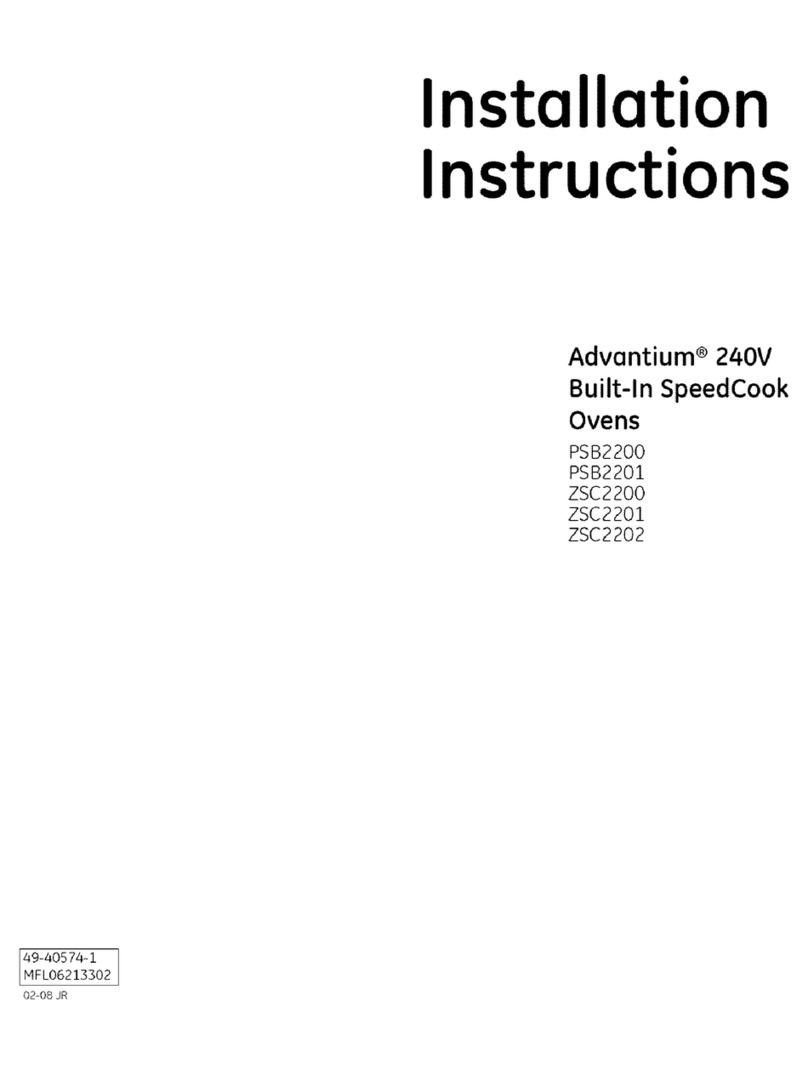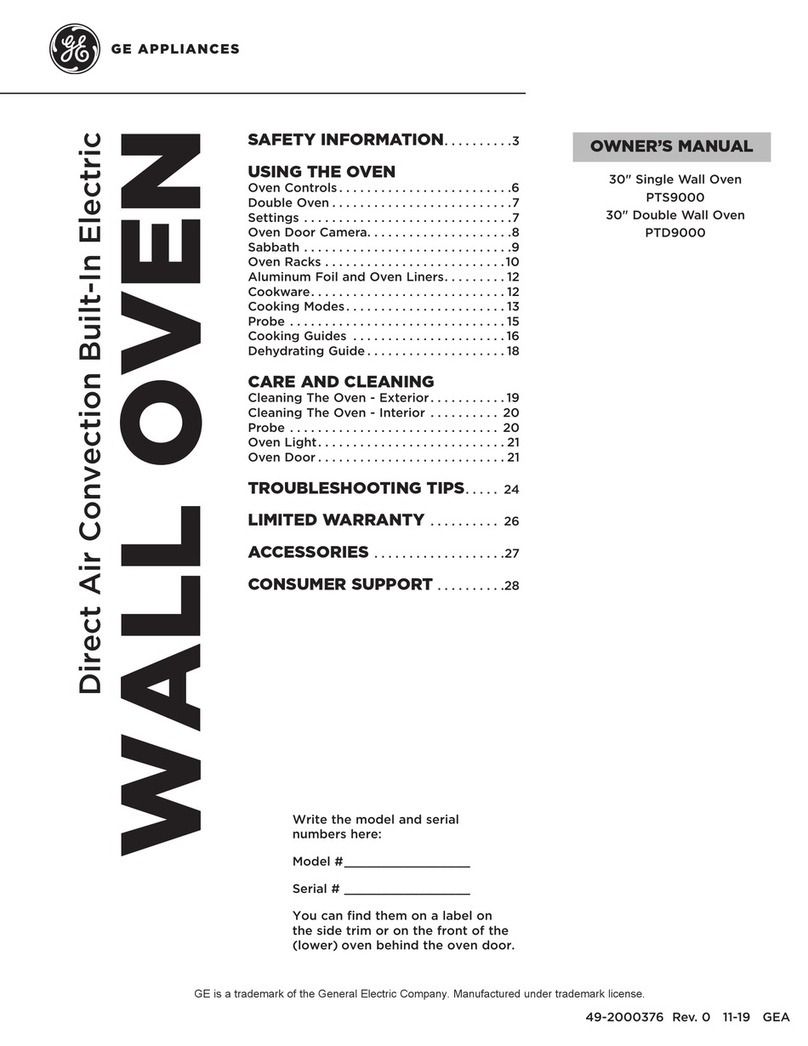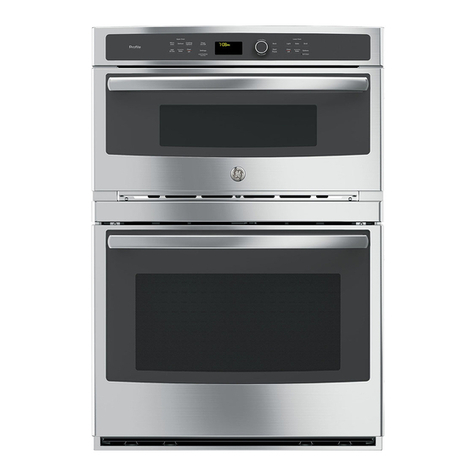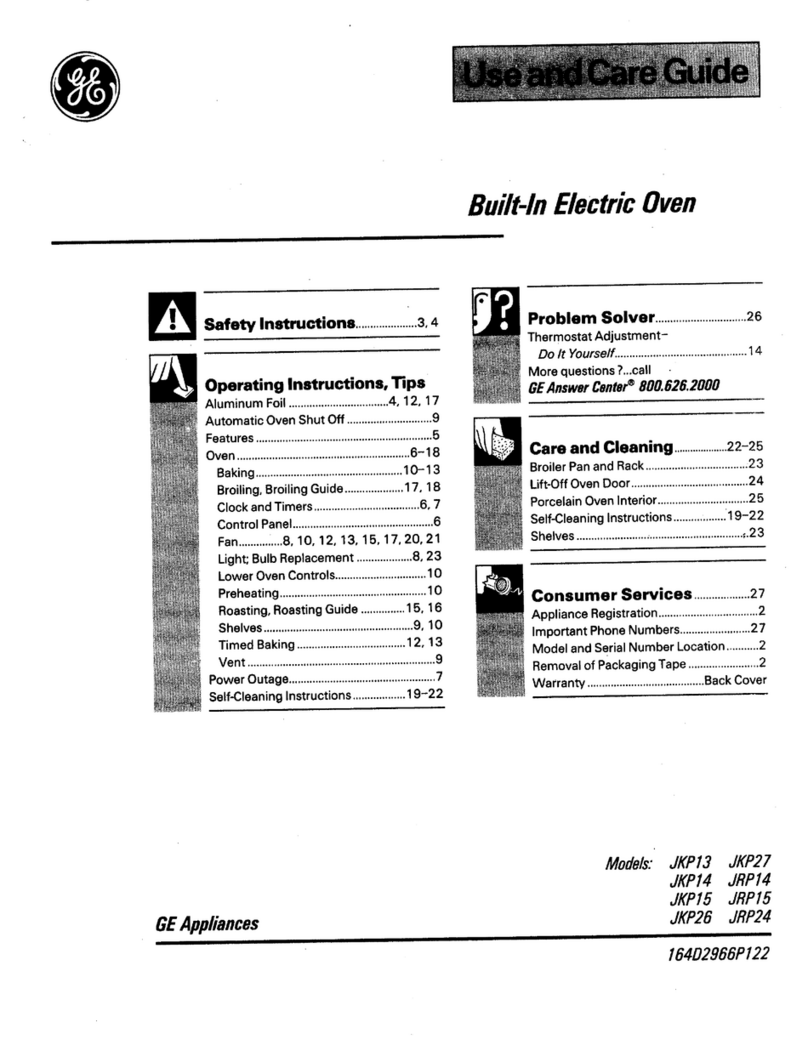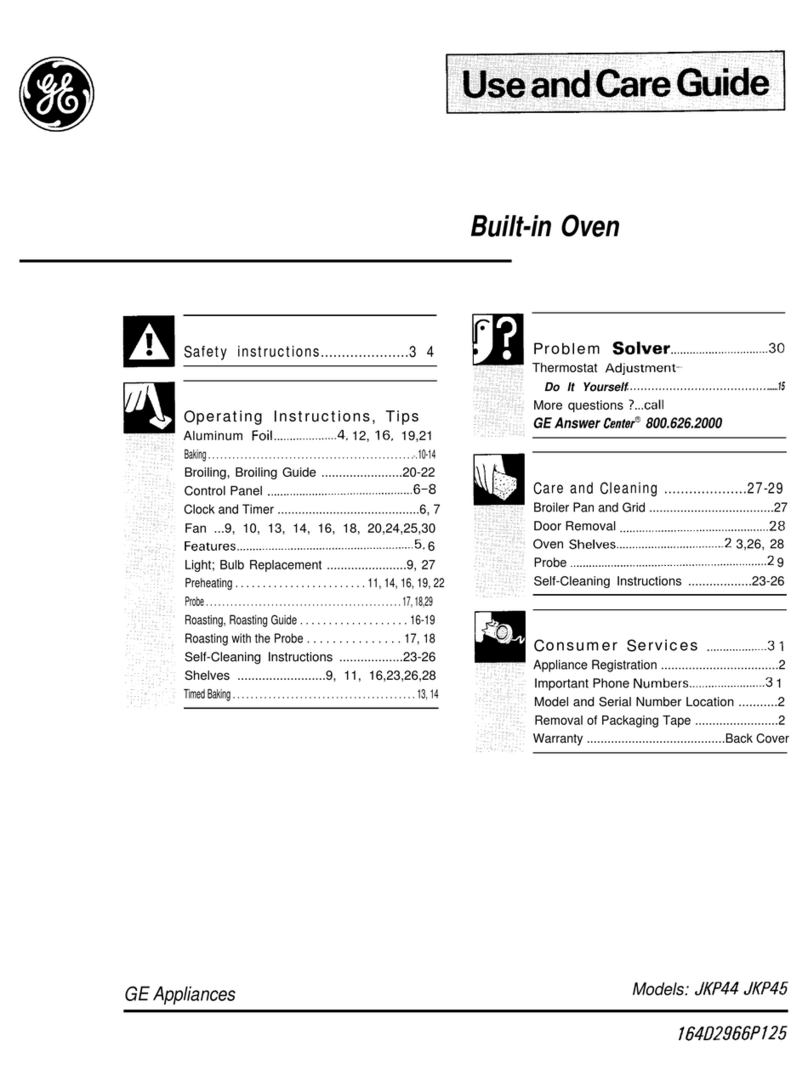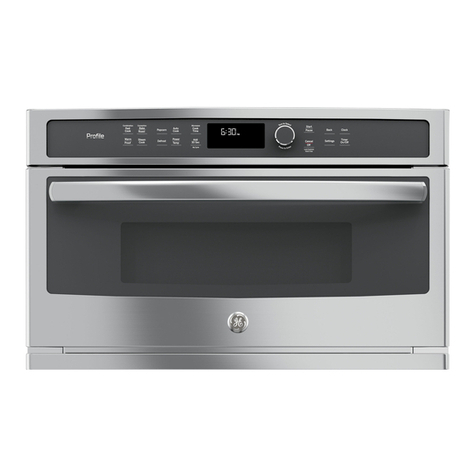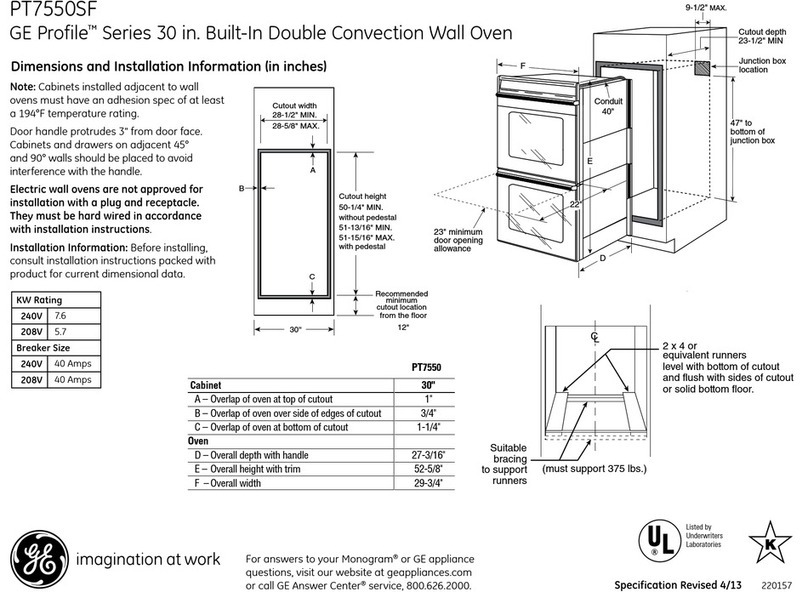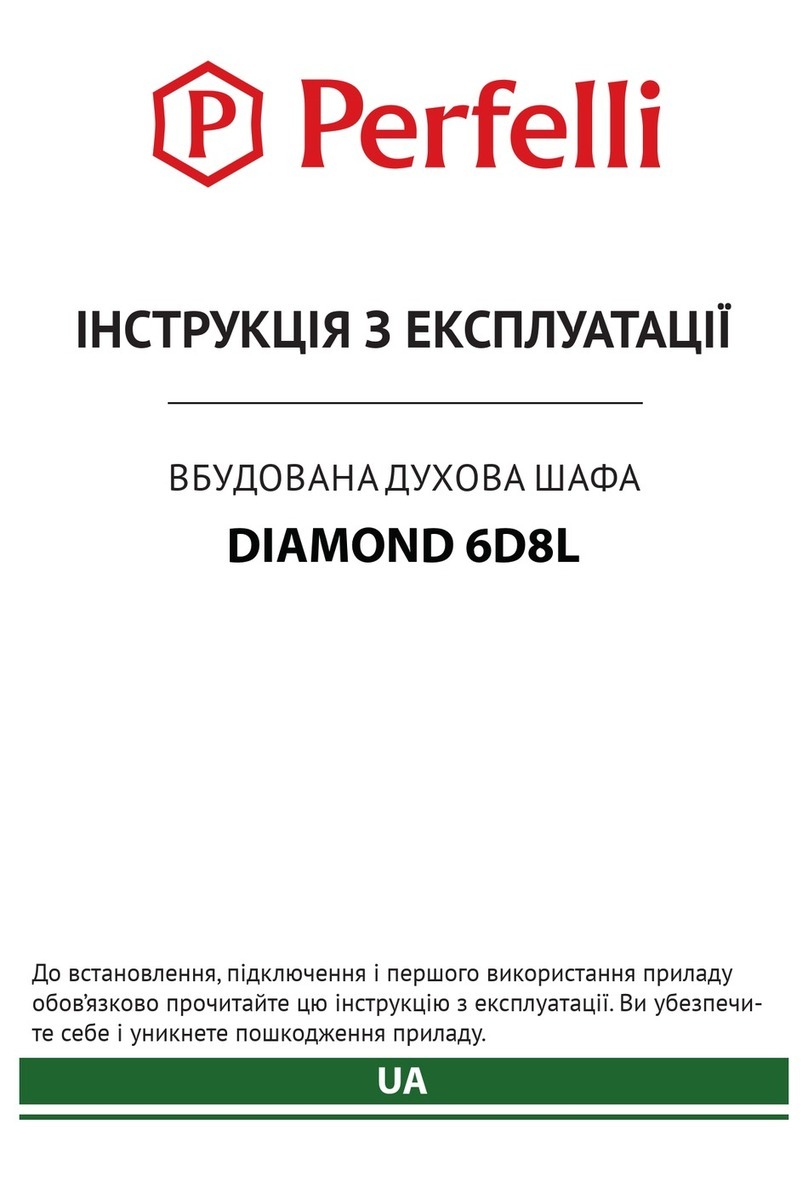
– 7 – (Continued next page)
How to Set the Oven for Broiling
Close the door. Always broil with the door
closed.
Touch BROIL.
Place the food on a broiler grid in a
broiler pan.
For double oven models only,
touch UPPER OVEN or LOWER OVEN
to select the desired oven.
Follow suggested rack positions in
the Broiling Guide.
The size, weight, thickness, starting temperature
and your preference for doneness will affect
broiling times. This guide is based on meats at
refrigerator temperature.
Touch HIGH BROIL or
LOW BROIL.
Touch START.
NOTE: A cooling fan may automatically turn on
and off to cool internal parts. This is normal, and
the fan may continue to run even after the oven
is turned off.
The broiler does not need to be
preheated for most broiling. However,
foods that cook quickly, such as thin
strips of meat or fish may require a short
preheating period of 2 to 3 minutes to
allow the food surface to brown in the
same time the food takes to be cooked
throughout.
Turn the food only once during broiling.
NOTE: Broil will not work if the temperature
probe is plugged in. Never leave your probe inside
the oven during a broil cycle.
To set the second oven, select PRESS
TO MAKE LOWER OVEN SELECTIONS or
PRESS TO MAKE UPPER OVEN SELECTIONS
as needed and follow the above steps.
The set temperature may be changed by
touching CHANGE TIME-TEMP.
The settings may be cancelled by
touching CANCEL.
The timer can be set by touching
SET KITCHEN TIMER. See the Kitchen Timer
section.
When broiling is finished, touch
CANCEL.
Close the door. Always broil with
the door closed.
START
HIGH
BROIL
LOW
BROIL
OR
If your oven is connected to 208
volts, rare steaks may be broiled by
preheating the broiler and positioning
the oven rack one position higher.
Touch CONVECTION BAKE or
CONVECTION ROAST.
For double oven models only, touch
UPPER OVEN or LOWER OVEN to
select the desired oven.
Two rack options are available:
■ SINGLE RACK – Touch for cooking
food items on only one rack in
convection bake.
■ MULTI-RACK – Touch for cooking
food items on more than one
rack (i.e. 2 or 3 racks) at the same
time in Convection Bake. See the
Multi-Rack Convection Baking section
for more information.
Touch the numbers to set the
desired temperature.
Touch ENTER.
Touch START.
The convection fan will turn on during
preheating. The control will signal when
the oven is preheated—this will take
approximately 10 minutes. The screen
will show the set temperature.
When the control signals, foods should
be placed in the oven.
For double oven models only, to set the
second oven, select PRESS TO MAKE
LOWER OVEN SELECTIONS or PRESS
TO MAKE UPPER OVEN SELECTIONS
as needed and follow the above steps.
The set temperature may be changed
by touching CHANGE TIME-TEMP for the
appropriate oven.
The settings may be cancelled by
touching CANCEL for the appropriate
oven.
The timer can be set by touching
SET KITCHEN TIMER. See the Kitchen Timer
section.
After cooking is complete, the oven will
signal and “MORE TIME” will display for
five minutes. Check food for doneness.
If more cooking time is needed, touch
MORE TIME and enter additional cooking
time. If not selected, the screen will
automatically clear.
How to Set the Oven for Convection Baking or Roasting
OR
UPPER
OVEN
LOWER
OVEN
CONVECTION
ROAST
CONVECTION
BAKE OR
On double oven models only.
START
ENTER
MULTI-RACK
SINGLE RACK OR
09876
54321
